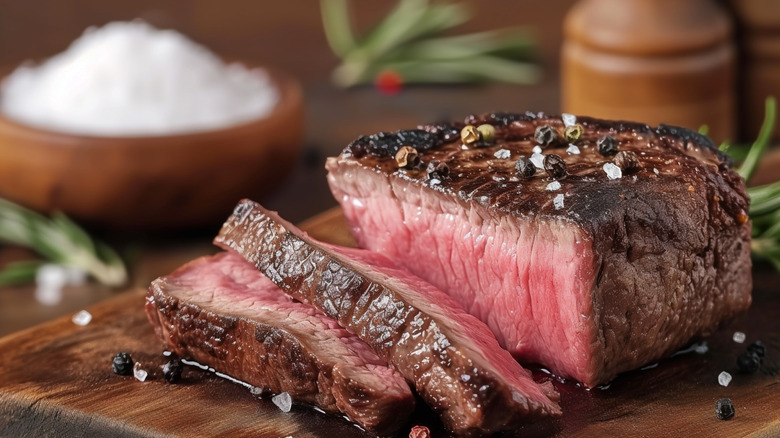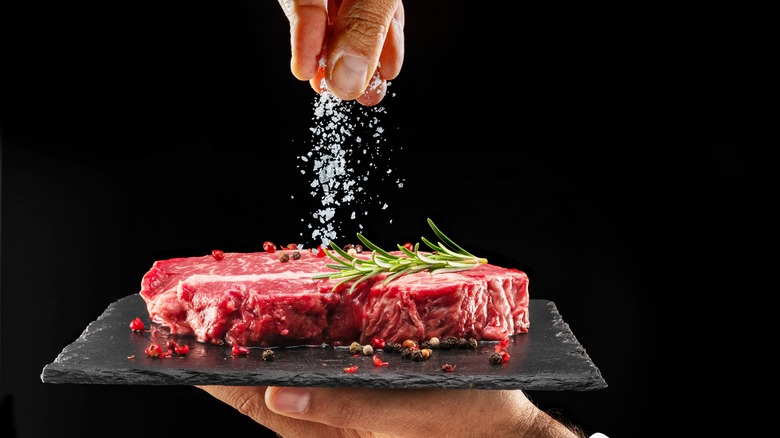The Crucial Step When Seasoning (And Dry Brining) Steaks For An Extra Crispy Crust
When you need to serve steak and impress your guests, it helps to achieve that crispy crust that delivers tons of caramelized flavor. According to Marissa Stevens, recipe developer and founder of Pinch and Swirl, the key to achieving this Maillard reaction all boils down to one thing: A dry surface.
"Surface moisture is the enemy of browning," Stevens says. "If the steak's wet, the heat goes into evaporating water instead of triggering the Maillard reaction." If your meat has a wet exterior, it'll essentially steam rather than sear. The interior of your steak still cooks during this process, so if you try to get a great crust on a wet steak, you may risk overcooking it. Since paper towels are all you need to guarantee a dry surface, you should always observe this quick but crucial step for the best end result.
"A dry surface helps you get that crisp, seared crust — especially important when pan-searing or using high heat," Stevens continues. If you really want extra juicy steaks with the perfect crust, Stevens suggests dry brining in some quality flaked salt for maximum flavor.
Dry brining and the Maillard reaction
Like its name suggests, dry brining involves coating a meat in salt and allowing it to sit for anywhere between a few hours and a of couple days. Marissa Stevens says this draws moisture out, creates a salt-concentrated liquid on the surface, then pushes that same liquid back into the meat, infusing it with flavor while still creating a dry surface for a crust.
"For thick steaks, I like to salt at least 12 hours ahead (even 24), uncovered in the fridge," Stevens says. "For thinner cuts, 30 minutes to an hour works well." The key here is to give your meat enough time for all of its juices to take in a bit of salt. Keeping it uncovered is especially important, as exposure to open air helps keep the surface dry.
Keep in mind that using more salt does not equal a faster dry brining time. Like any flavor-infusing trick, you need to use the appropriate amount and give your steaks time. As a general rule, you'll need about one teaspoon of salt per pound of meat, and the timing depends entirely on how thick your cut is. For example, although a 6-ounce filet may weigh less than a 12-ounce ribeye, it needs more time to dry brine since it's much thicker. However, since it weighs less, you won't need as much salt.


